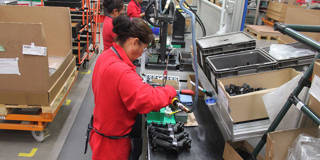
What’s Behind Latin America’s Jobless Recovery?
A common explanation for the apparent decoupling of growth and employment in many countries is that technological advances, such as automation and robotics, have resulted in capital substituting for labor across the region’s economies. But in Latin America, at least, a simpler and more plausible hypothesis has not yet been ruled out.
MONTEVIDEO – After a sharp and continuous slowdown that began in mid-2013 and ended in the last quarter of 2015, economic growth in most Latin American countries has now officially returned. But a corresponding decline in unemployment is nowhere in sight. In fact, unemployment in much of the region has continued climbing during the last seven quarters. Why?